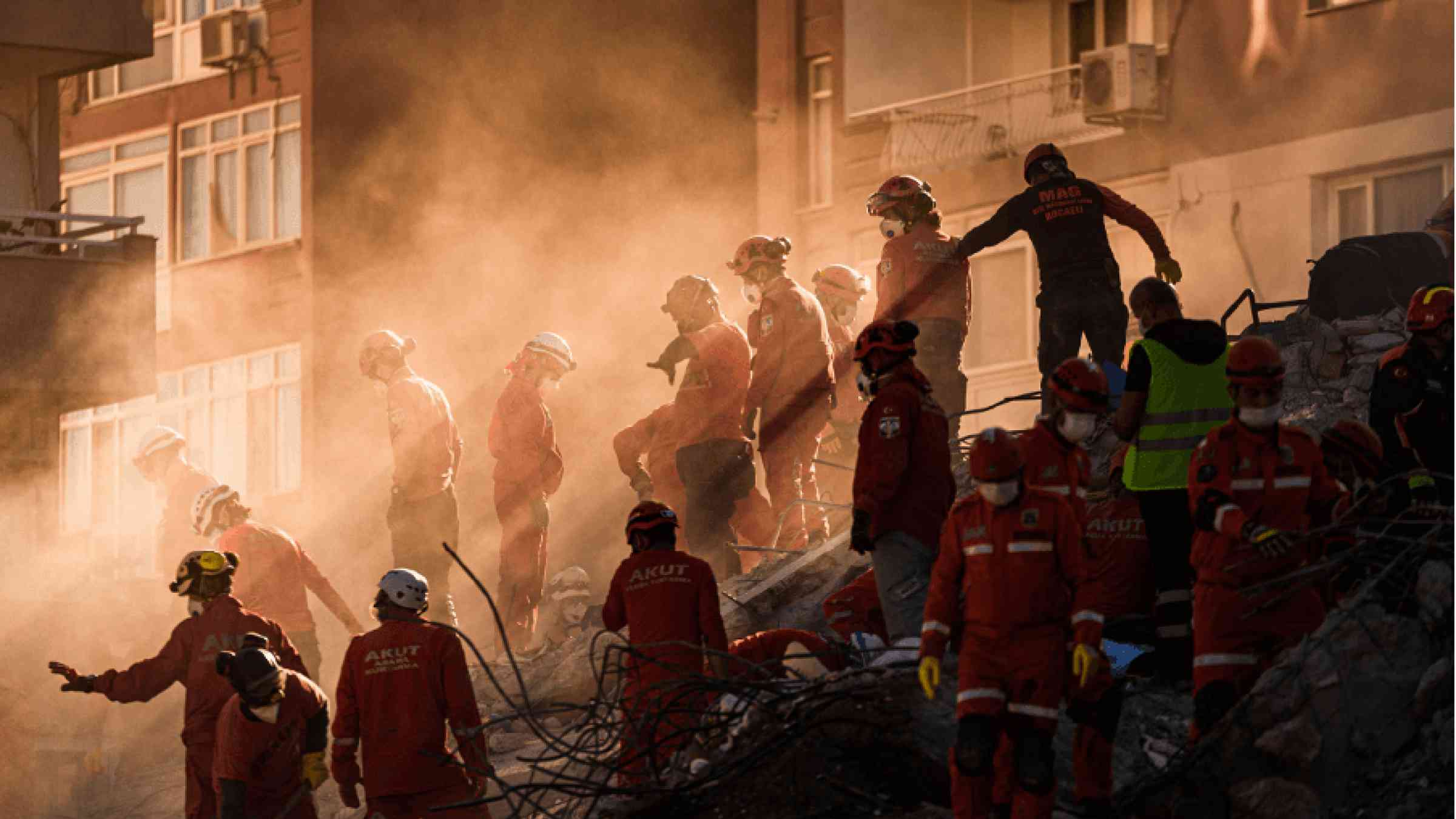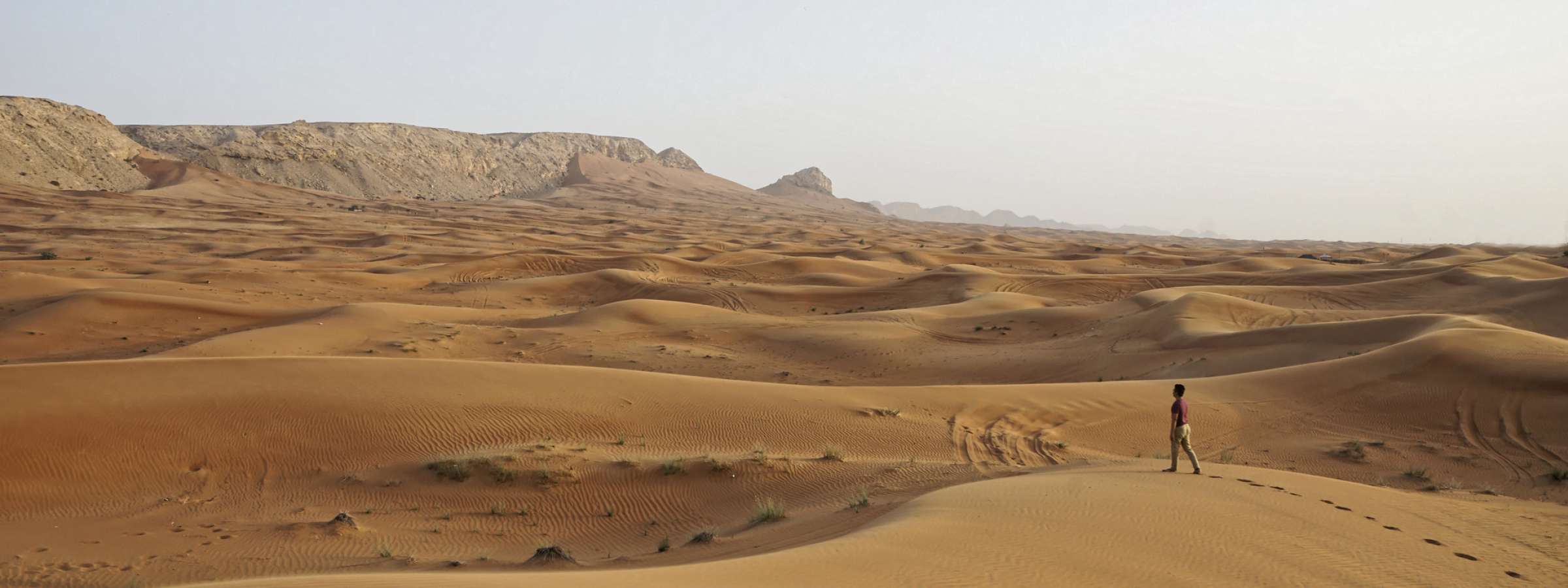UNDRR’s Work Programme for 2024-25
UNDRR’s Work Programme for 2024-25 comes at a critical juncture. It is built around strategic objectives that are geared to helping countries better understand the risks they face and to strengthen their disaster risk governance at all levels; to driving up investments in disaster risk reduction through stakeholder partnerships; and to integrating disaster risk reduction at the heart of sustainable development efforts.
“The era of global warming has ended; the era of global boiling has arrived. Leaders must lead. No more hesitancy. No more excuses. No more waiting for others to move first.
There is simply no more time for that. It is still possible to limit global temperature rise to 1.5 degrees Celsius and avoid the very worst of climate change. But only with dramatic, immediate climate action.”
Introduction
There’s nothing natural about disasters. In fact, contrary to popular perception, we are far from powerless in the face of earthquakes, tsunamis, cyclones and pandemics. Such hazards may be inevitable, but their disastrous impacts are not: we can curb their devastating power by understanding their interrelated risks, setting up early warning systems and investing preemptively.
Doing so is becoming ever more urgent as the accelerating pace of climate change causes more frequent longer-lasting and harsher weather events, and as many countries urbanize at unprecedented rates.
The United Nations Office for Disaster Risk Reduction (UNDRR) works alongside countries around the world to meet these challenges and to protect their development gains from disasters. Precisely how we will do this over the next two years is detailed in our Work Programme for 2024-25.
Our Strategic Objectives

Countries use quality Information and analysis to reduce risks and inform Development decisions.
Expected results:
- Robust evidence, innovation and good practices on risk reduction available to inform decision-making processes across and within sectors
- Governments and other stakeholders supported to integrate climate change and disaster risk reduction into relevant strategies and policies across and within sectors
- Review and monitoring accelerates achievement and strengthens accountability towards the Sendai Framework

Disaster risk reduction governance strengthened at global, regional, national and local levels
Expected results:
- Effective and inclusive regional coordination and review mechanisms accelerate implementation of the Sendai Framework
- Governments supported to develop and implement integrated, multistakeholder, gender responsive and disability inclusive risk governance
- Local governments supported to develop, implement and finance climate sensitive, inclusive multi-hazard disaster risk reduction strategies
- Governments’, UN system partners’ and other stakeholders’ capacities are developed for
SDGs, Targets, and Indicators Relevant to the Issues Discussed in the Article
1. Which SDGs are addressed or connected to the issues highlighted in the article?
- SDG 13: Climate Action
- SDG 11: Sustainable Cities and Communities
- SDG 9: Industry, Innovation, and Infrastructure
The article discusses the urgent need for climate action in response to the accelerating pace of climate change. It also mentions the challenges faced by countries as they urbanize at unprecedented rates, which relates to the goal of sustainable cities and communities. Additionally, the article highlights the importance of integrating disaster risk reduction into development efforts, which aligns with the goal of industry, innovation, and infrastructure.
2. What specific targets under those SDGs can be identified based on the article’s content?
- Target 13.1: Strengthen resilience and adaptive capacity to climate-related hazards and natural disasters
- Target 11.5: By 2030, significantly reduce the number of deaths and the number of people affected and substantially decrease the direct economic losses relative to global gross domestic product caused by disasters, including water-related disasters, with a focus on protecting the poor and people in vulnerable situations
- Target 9.1: Develop quality, reliable, sustainable and resilient infrastructure, including regional and transborder infrastructure, to support economic development and human well-being, with a focus on affordable and equitable access for all
The article emphasizes the need to strengthen disaster risk reduction efforts and build resilience to climate-related hazards and natural disasters. It also highlights the importance of reducing the impact of disasters on human lives, economic losses, and vulnerable populations. Additionally, the article mentions the need for sustainable and resilient infrastructure to support economic development and well-being.
3. Are there any indicators mentioned or implied in the article that can be used to measure progress towards the identified targets?
Yes, the article provides indicators that can be used to measure progress towards the identified targets:
- Number of countries applying new risk information and analysis generated by UNDRR
- Number of countries initiating specific analysis with UNDRR on cascading and systemic risks and applying it in planning and decision-making
- Number of countries using the new-generation tracker for hazardous events, losses, and damages
- Awareness of the importance of risk-informed sustainable development among governments and other stakeholders
- Visibility and influence of UNDRR in global deliberations and processes
- Awareness of the relevance of UNDRR’s work to global resilience efforts among development actors
- Number of events and breadth of outreach achieved through UNDRR flagship international days
- Increased use and citation of disaster risk reduction as a critical element of development by key spokespeople
- Establishment of a global network of journalists for disaster risk reduction
- Expansion of PreventionWeb as the leading engagement platform for the disaster risk reduction community
- Recognition of disaster risk reduction as an important dimension of climate action
- Better collaboration between ministries responsible for disaster risk management, climate change adaptation, planning, and finance
- Advocacy on climate action through the Zero Climate Disasters campaign
- Increase in the number of countries supported with financing frameworks for disaster risk reduction
- Assessment of infrastructure vulnerabilities in several regions and increased actions for resilient infrastructure
- Acceleration of investment in resilience through partnership and innovative financing models for disaster risk reduction
These indicators can be used to track progress in implementing the targets and achieving the desired outcomes.
SDGs, Targets, and Indicators Table
SDGs Targets Indicators SDG 13: Climate Action Target 13.1: Strengthen resilience and adaptive capacity to climate-related hazards and natural disasters - Number of countries applying new risk information and analysis generated by UNDRR
- Number of countries initiating specific analysis with UNDRR on cascading and systemic risks and applying it in planning and decision-making
- Number of countries using the new-generation tracker for hazardous events, losses, and damages
SDG 11: Sustainable Cities and Communities Target 11.5: By 2030, significantly reduce the number of deaths and the number of people affected and substantially decrease the direct economic losses relative to global gross domestic product caused by disasters, including water-related disasters, with a focus on protecting the poor and people in vulnerable situations - Awareness of the importance of risk-informed sustainable development among governments and other stakeholders
- Visibility and influence of UNDRR in global deliberations and processes
- Awareness of the relevance of UNDRR’s work to global resilience efforts among development actors
SDG 9: Industry, Innovation, and Infrastructure Target 9.1: Develop quality, reliable, sustainable and resilient infrastructure, including regional and transborder infrastructure, to support economic development and human well-being, with a focus on affordable and equitable access for all - Recognition of disaster risk reduction as an important dimension of climate action
- Better collaboration between ministries responsible for disaster risk management, climate change adaptation, planning, and finance
- Assessment of infrastructure vulnerabilities in several regions and increased actions for resilient infrastructure
Behold! This splendid article springs forth from the wellspring of knowledge, shaped by a wondrous proprietary AI technology that delved into a vast ocean of data, illuminating the path towards the Sustainable Development Goals. Remember that all rights are reserved by SDG Investors LLC, empowering us to champion progress together.
Source: undrr.org

Join us, as fellow seekers of change, on a transformative journey at https://sdgtalks.ai/welcome, where you can become a member and actively contribute to shaping a brighter future.




